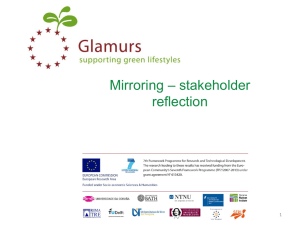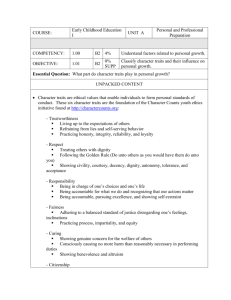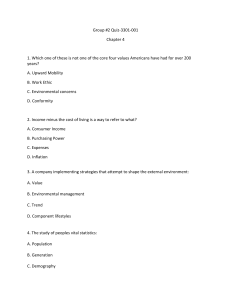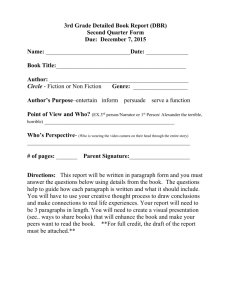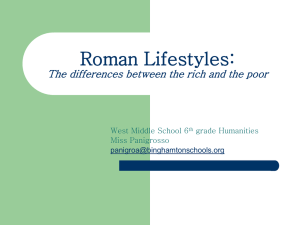SPEECH B2: INTERPERSONAL COMMUNICATION
advertisement
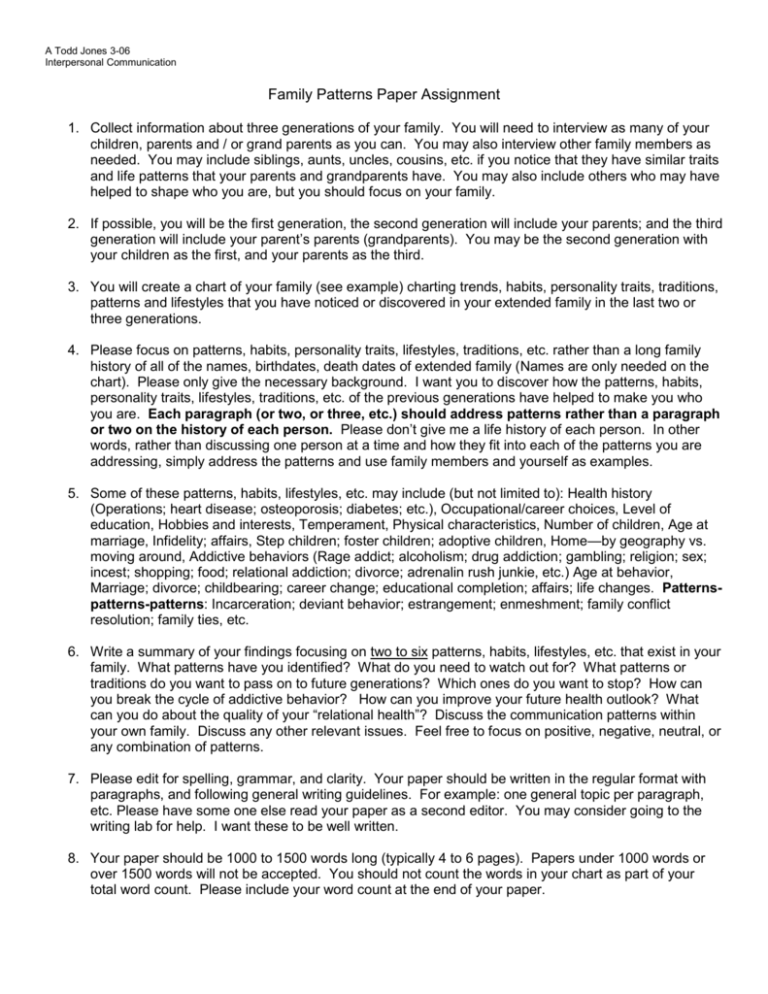
A Todd Jones 3-06 Interpersonal Communication Family Patterns Paper Assignment 1. Collect information about three generations of your family. You will need to interview as many of your children, parents and / or grand parents as you can. You may also interview other family members as needed. You may include siblings, aunts, uncles, cousins, etc. if you notice that they have similar traits and life patterns that your parents and grandparents have. You may also include others who may have helped to shape who you are, but you should focus on your family. 2. If possible, you will be the first generation, the second generation will include your parents; and the third generation will include your parent’s parents (grandparents). You may be the second generation with your children as the first, and your parents as the third. 3. You will create a chart of your family (see example) charting trends, habits, personality traits, traditions, patterns and lifestyles that you have noticed or discovered in your extended family in the last two or three generations. 4. Please focus on patterns, habits, personality traits, lifestyles, traditions, etc. rather than a long family history of all of the names, birthdates, death dates of extended family (Names are only needed on the chart). Please only give the necessary background. I want you to discover how the patterns, habits, personality traits, lifestyles, traditions, etc. of the previous generations have helped to make you who you are. Each paragraph (or two, or three, etc.) should address patterns rather than a paragraph or two on the history of each person. Please don’t give me a life history of each person. In other words, rather than discussing one person at a time and how they fit into each of the patterns you are addressing, simply address the patterns and use family members and yourself as examples. 5. Some of these patterns, habits, lifestyles, etc. may include (but not limited to): Health history (Operations; heart disease; osteoporosis; diabetes; etc.), Occupational/career choices, Level of education, Hobbies and interests, Temperament, Physical characteristics, Number of children, Age at marriage, Infidelity; affairs, Step children; foster children; adoptive children, Home—by geography vs. moving around, Addictive behaviors (Rage addict; alcoholism; drug addiction; gambling; religion; sex; incest; shopping; food; relational addiction; divorce; adrenalin rush junkie, etc.) Age at behavior, Marriage; divorce; childbearing; career change; educational completion; affairs; life changes. Patternspatterns-patterns: Incarceration; deviant behavior; estrangement; enmeshment; family conflict resolution; family ties, etc. 6. Write a summary of your findings focusing on two to six patterns, habits, lifestyles, etc. that exist in your family. What patterns have you identified? What do you need to watch out for? What patterns or traditions do you want to pass on to future generations? Which ones do you want to stop? How can you break the cycle of addictive behavior? How can you improve your future health outlook? What can you do about the quality of your “relational health”? Discuss the communication patterns within your own family. Discuss any other relevant issues. Feel free to focus on positive, negative, neutral, or any combination of patterns. 7. Please edit for spelling, grammar, and clarity. Your paper should be written in the regular format with paragraphs, and following general writing guidelines. For example: one general topic per paragraph, etc. Please have some one else read your paper as a second editor. You may consider going to the writing lab for help. I want these to be well written. 8. Your paper should be 1000 to 1500 words long (typically 4 to 6 pages). Papers under 1000 words or over 1500 words will not be accepted. You should not count the words in your chart as part of your total word count. Please include your word count at the end of your paper.
